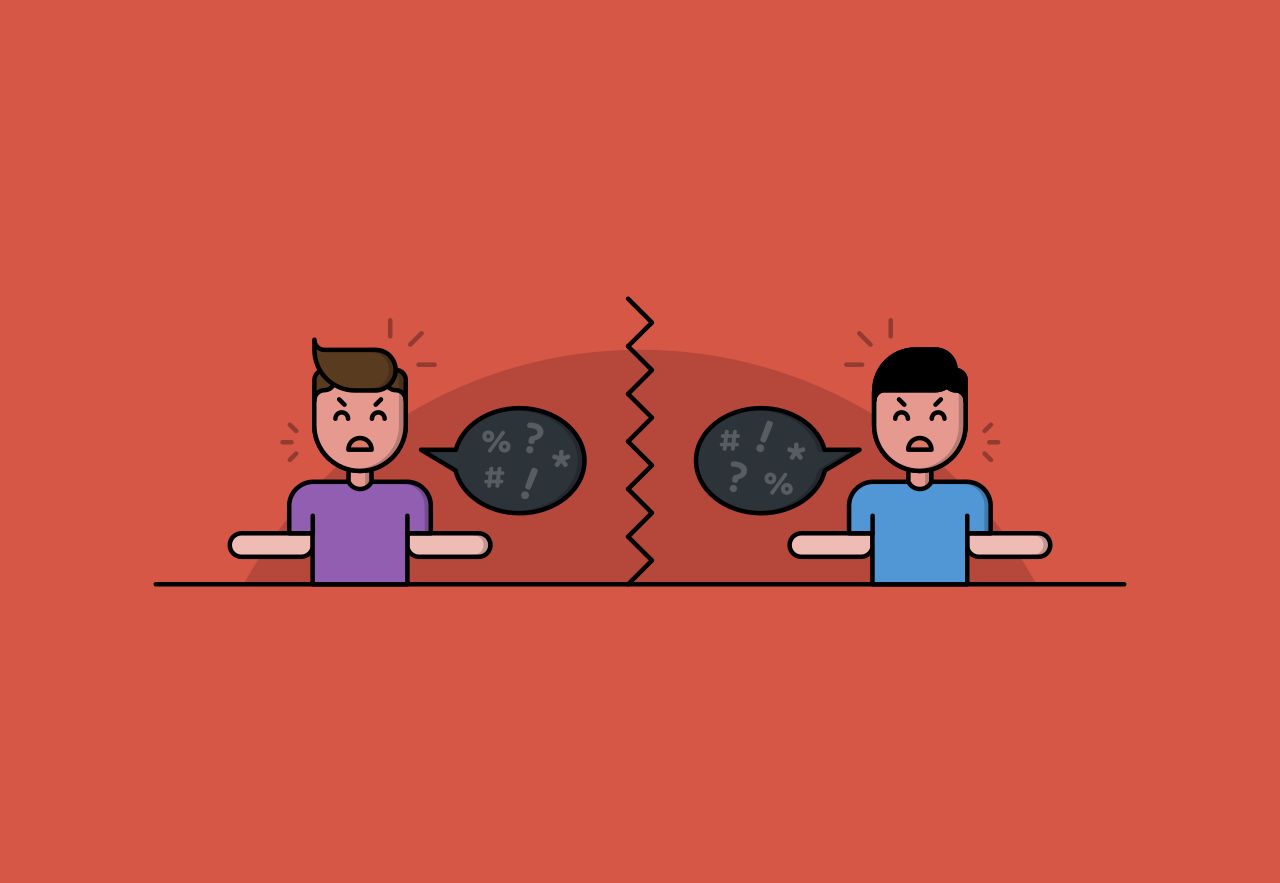As the manager or owner of a small business, you probably have your hands full. You've got books to balance, roles to fill, rotas to plan — the last thing you need is for two or more of your employees to be at each other's throats.
If your staff aren't getting along, however, it could spell trouble for your business.
Left unchecked, disputes between employees could start to affect their performance at work. That, in turn, could affect the dynamic of the team, and before you know it targets are being missed, customers are receiving sub-par service and you've got gaping holes in your workforce as people start to quit.
Clearly, you need to take action. But how should you go about handling disputes before they spiral out of control? Let's find out!
Today, we're focusing on disputes between two or more members of staff rather than individual employee complaints. If you're concerned that a member of your team is unhappy, then check out our previous article on the subject of quiet and disgruntled employees for tips on how to solve the problem.
Know When to Act

Not every workplace conflict needs to be handled by a manager. In fact, step in too soon and you risk making the issue bigger than it needed to be, potentially causing unnecessary embarrassment to the people involved and earning yourself a reputation as a micromanager.
Wait too long, however, and you'll lose the trust and respect of your team, who will resent having to work in a toxic environment.
If things start to deteriorate between two or more of your staff to the point that it's affecting their work or that of the people around them, then you'll need to take action. The only way you'll be able to determine when to do that is by keeping abreast of changes in the workplace and being aware of the relationships that exist between the members of your team.
Choose your moment wisely, but be prepared to remain hands-off if need be.
Assess the Situation

If you decide that it's time to take action, the next thing to do is to get your (angry, flapping) ducks in a row.
Speak to the concerned parties individually and record their versions of events. Disregard any obvious hyperbole and focus on names, dates and the things people have reportedly said or done to cause the current situation. Once they've finished talking, go over your notes with them to ensure sure you have the facts straight.
Next, you'll need to compare their stories. This will usually give you an idea of the true cause of the problem: What is a simple misunderstanding? Are their personalities clashing? Is one person clearly in the wrong?
Choose your Approach

When it comes to the actual conflict resolution, you will inevitably have to get both parties in the same room at some point.
Whether you do this early on, however, will depend entirely on your employees' personalities and the type of dispute.
There’s no one-size-fits-all method for resolving employee conflicts. If one of the people involved is more reserved or easily embarrassed, for example, then inviting both parties to talk face to face won’t get you very far.
Depending on the nature of the problem and the people you're working with, you may want to consider one of the following approaches:
- Let them talk it out. Create a safe space and bring the warring parties together. Sit in on the chat, but let them work the problem out by themselves. Sometimes, all people need to resolve their differences is time to have a proper conversation — a luxury that we often lack in the busy workplace.
- Mediate. If one or both of your parties is reluctant to speak, or if the conversation is likely to be dominated, then take the role of mediator and guide the conversation. Give each party opportunity to speak, taking care to moderate their language and bring the conversation back to more neutral ground if things get too heated. Try to focus on what needs to be done to reach an amicable solution rather than who is most at fault.
- Separate. If the situation is so volatile that bringing the two parties together will only result in more squabbling, then try to hash out possible solutions with each person individually. Bring them together only when a decision has been made on where to go next. Your staff don't have to agree to like each other, but they must agree to accept the terms discussed and to move on.
Follow Policy

You wrote your employee handbook for a reason, so make sure that you refer to relevant sections when deciding what, if any, action to take in order to resolve the situation — and make your employees aware that you are doing so.
The handbook should clearly set out what is expected of staff and the kind of behaviour that is considered unacceptable. If the cause of the conflict is in violation of one or more of these rules, then it helps to have something concrete to point to when responding to it.
If disciplinary action is required as a result of the employee conflict, openly referring to your employee handbook will make it easier for you to maintain your position as an unbiased arbiter and ensure that personal feelings do not interfere with the decision-making process.
Follow Up

Just because the discussions are over doesn't mean that the problem will go away forever, nor that everything will immediately go back to normal.
Try to meet with both parties separately (and discreetly) a week or so after the matter has initially been settled, and check that they are still happy with the resolution you arrived at and whether the situation has improved.
This needn't be a formal meeting — your follow-up can be as simple as a quick chat in the corridor or in the break room. Just be sure to find a moment once the dust has settled to ensure that both parties feel that progress has been made.
If either party feels that issues still remain, then it may be necessary to bring them together for another discussion. It's often better to issue advice individually, however, before declaring the previous attempt at conflict resolution a failure and scheduling another formal discussion.
Document Everything

Paperwork will probably be the last thing on your mind when you have a pair of employees tearing each other to shreds, but it's important that you document the entire episode from start to finish.
Not only will this give you something useful to refer to if similar problems arise in the future, but it will protect you and your company in the event that a disgruntled employee decides to take action for what they deem to be unfair treatment or, in more severe cases, dismissal.
Be thorough. Be open. Be organised. Your future self will thank you.
Last-Minute Tips
By now you should be well equipped to deal with disputes between your staff and have a good idea of the process to follow.
We'll leave you with a few quick tips to keep in mind before sitting down with a pair of arguing employees. Good luck!
Address the elephant in the room. Be tactful during your discussions, but don't leave anything to interpretation — this will only create confusion and could come back to bite you.
Find things they can both agree on. It doesn't matter what they are, just so long as your staff are able to see that they share some common ground. This will help set the tone for discussion and expedite the resolution process.
Focus on the problem, not the people. That doesn’t mean ignoring people’s feelings; rather, you need to spare them by focusing on your employees' actions rather than personal faults. It's better to describe someone as "using aggressive language", for example, than saying that they themselves were being aggressive.
Nip problems in the bud. No one looks forward to sitting down with a pair of bickering staff, but by putting the matter off you risk a minor dispute today becoming a full-blown war tomorrow.
Listen. Before you bring your two parties together, give them each a chance to vent their anger and frustration. It'll make the discussions that follow 10 times more amicable.
Have you had experience of conflict resolution in the workplace? If so, we'd love to hear from you! Leave us a comment below and share your knowledge with your fellow managers and business owners. Otherwise, head back to the RotaCloud Blog homepage for more HR tips and guides to business growth.

